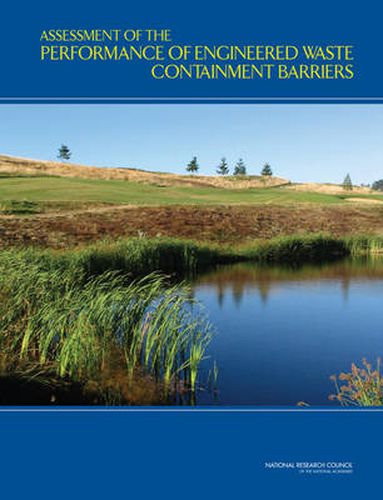Readings Newsletter
Become a Readings Member to make your shopping experience even easier.
Sign in or sign up for free!
You’re not far away from qualifying for FREE standard shipping within Australia
You’ve qualified for FREE standard shipping within Australia
The cart is loading…






President Carter’s 1980 declaration of a state of emergency at Love Canal, New York, recognized that residents’ health had been affected by nearby chemical waste sites. The Resource Conservation and Recovery Act, enacted in 1976, ushered in a new era of waste management disposal designed to protect the public from harm. It required that modern waste containment systems use engineered barriers designed to isolate hazardous and toxic wastes and prevent them from seeping into the environment. These containment systems are now employed at thousands of waste sites around the United States, and their effectiveness must be continually monitored. Assessment of the Performance of Engineered Waste Containment Barriers assesses the performance of waste containment barriers to date. Existing data suggest that waste containment systems with liners and covers, when constructed and maintained in accordance with current regulations, are performing well thus far.However, they have not been in existence long enough to assess long-term (postclosure) performance, which may extend for hundreds of years. The book makes recommendations on how to improve future assessments and increase confidence in predictions of barrier system performance which will be of interest to policy makers, environmental interest groups, industrial waste producers, and industrial waste management industry.
$9.00 standard shipping within Australia
FREE standard shipping within Australia for orders over $100.00
Express & International shipping calculated at checkout
President Carter’s 1980 declaration of a state of emergency at Love Canal, New York, recognized that residents’ health had been affected by nearby chemical waste sites. The Resource Conservation and Recovery Act, enacted in 1976, ushered in a new era of waste management disposal designed to protect the public from harm. It required that modern waste containment systems use engineered barriers designed to isolate hazardous and toxic wastes and prevent them from seeping into the environment. These containment systems are now employed at thousands of waste sites around the United States, and their effectiveness must be continually monitored. Assessment of the Performance of Engineered Waste Containment Barriers assesses the performance of waste containment barriers to date. Existing data suggest that waste containment systems with liners and covers, when constructed and maintained in accordance with current regulations, are performing well thus far.However, they have not been in existence long enough to assess long-term (postclosure) performance, which may extend for hundreds of years. The book makes recommendations on how to improve future assessments and increase confidence in predictions of barrier system performance which will be of interest to policy makers, environmental interest groups, industrial waste producers, and industrial waste management industry.